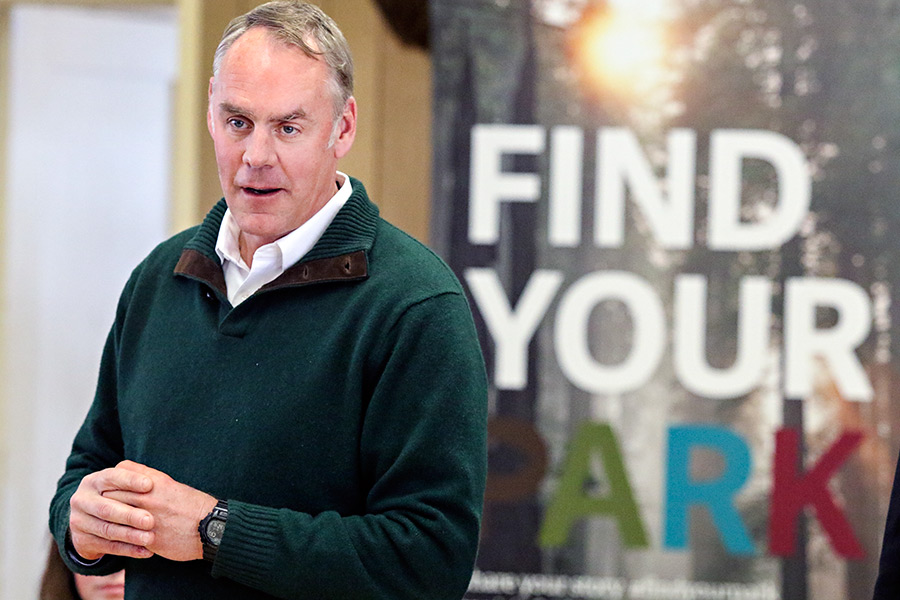Following a centennial year that saw more than 330 million people converge on the country’s national parks, the agency that manages “America’s Best Idea” is now at risk of seeing much-needed funding and upkeep slashed under President Donald Trump’s budget blueprint, which would also defang government regulatory agencies like the U.S. Environmental Protection Agency.
Last month, the Trump administration released a budget proposal that would cut nearly 12 percent from the annual budget of the Department of the Interior, which oversees the National Park Service, as well as 31 percent of the Environmental Protection Agency’s budget, an agency whose funding also impacts various park projects.
As a result, park advocates are sounding the alarm.
According to the NPS, the hundreds of millions of visitors to the national parks injected $32 billion into the U.S. economy in 2015 and supported 295,000 jobs, while also taxing the agency’s resources.
John Garder, director of budget and appropriations for the National Parks Conservation Association, said parks face a surfeit of challenges that require more funding, not less, particularly as visitation continues to swell disproportionately to the amount of funding parks receive.
“Our national parks have already been suffering from 10 percent fewer staff than a few years ago and the growth of billions of dollars of deferred repair needs, among other impacts of underfunding — just as the system has experienced a 13 percent increase in visitation over the last two years,” Garder said.
Trump’s budget proposal did not specify how much of the 12 percent Interior Department cut would be pulled from the parks. Additionally, the budget did provide for greater funding to address a $12 billion deferred parks maintenance backlog.
In a good-faith gesture on April 3, Trump donated his first quarter salary to the National Parks Service to help offset the $229 million maintenance backlog in America’s historic battlefields. Zinke accepted the donation, which totaled $78,333.
In a statement, U.S. Secretary of the Interior Ryan Zinke said, “America’s public lands are our national treasures, and the president’s budget sends a strong signal that we will protect and responsibly manage these vast areas of our country.”
However, when Zinke first learned of the Trump administration’s initial plan to slash 10 percent from his agency, he vowed to “fight for the budget.”
Whether Zinke is still spoiling for a fight remains unclear, but the newly announced 12 percent budget cut is at odds with the priorities Zinke raised at his March 3 address at Interior headquarters, including America’s aging infrastructure.
“We need to focus on making sure we repair and be the good stewards,” he said. “So we’re behind on infrastructure. I’m going to ask the president for the whole enchilada to make sure that we focus on rebuilding our parks and make sure the refuges out there have what they need.”
Trump’s budget seeks to ensure National Park Service assets “are preserved for future generations by increasing investment in deferred maintenance projects,” the proposal says, while reducing funds for other agency construction and maintenance programs.
Land Tawney, CEO of Backcountry Hunters and Anglers, a group that has voiced strong support for Zinke, strongly criticized the proposal and called on members of Congress to undertake swift action in support of the nation’s natural resources, outdoor opportunities and outdoors-based economy.
“The proposed budget released by the president is, in a word, unacceptable,” Tawney said. “If adopted as written, this proposal not only would fundamentally diminish a wide range of programs that conserve and uphold public access to our lands and waters; it also would undermine the ability of key entities such as the Interior and Agriculture departments to do their jobs and responsibly manage the nation’s natural resources.”
Tawney said he expects Zinke to use his bully pulpit and work with members of Congress to obtain the tools needed to uphold popular programs like the Land and Water Conservation Fund.
The Interior employs 70,000 people at more than 2,000 locations to fulfill its mission, managing 530 million acres — 20 percent of U.S. territory. It controls even more resources underground, 700 million acres of minerals.
The proposed 12 percent decrease, shrinking the budget to $11.6 billion and marking a $1.5 billion reduction from last year’s level, would cause greater pain in the offices that purchase public lands.
According to Trump’s budget synopsis, cuts to land acquisitions would be diverted to make up ground on the maintenance backlog, which Zinke has identified as a top priority.
Because large parcels of land within national parks are privately owned, major land acquisitions can help parks when owners decide to sell, Garder said.
Although Trump’s budget synopsis does not specify where exactly the cuts would be made, Garder said the beleaguered agency can’t sustain a budget free fall.
“When adding the budget blueprint for next year to the threat of an administrative hiring freeze and last week’s request for additional cuts in this fiscal year, our national parks are facing an onslaught of funding threats that should alarm every American who loves them,” Garder said. “Congress needs to reject these damaging proposals, and Secretary Zinke needs to stand up not just for repairing parks, but for ensuring that they have enough rangers to operate them well.”
